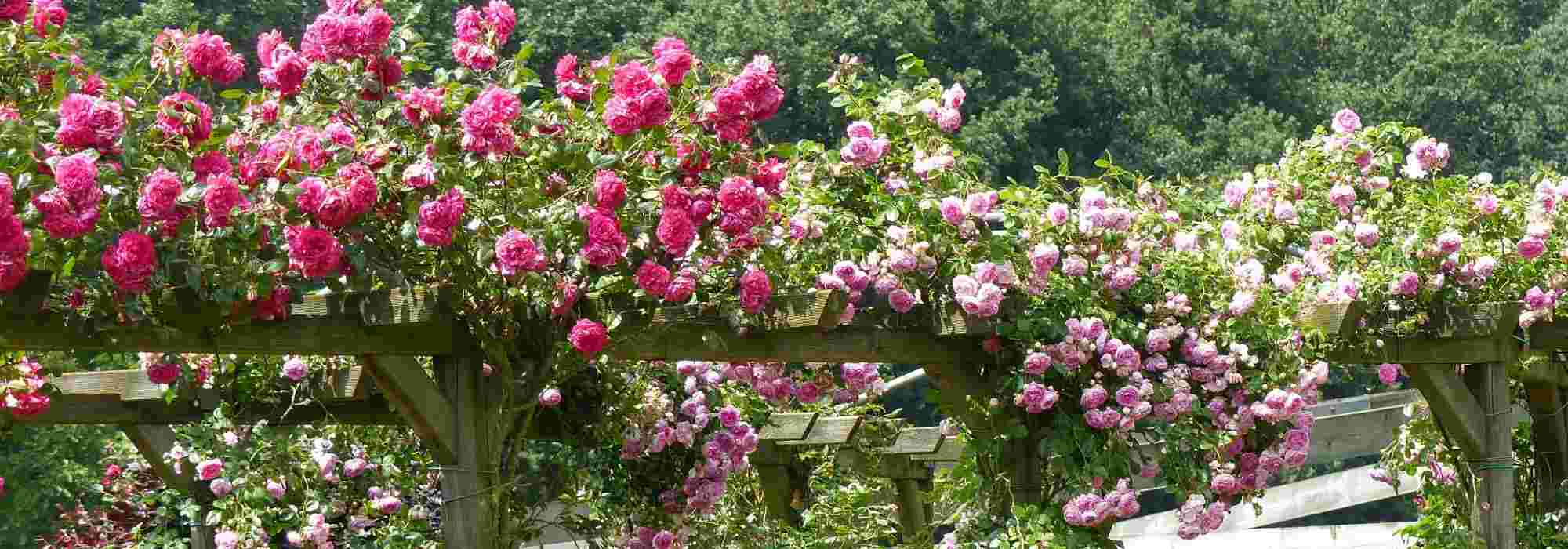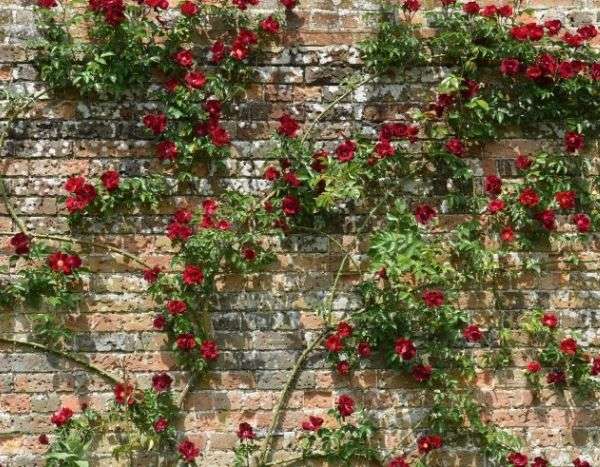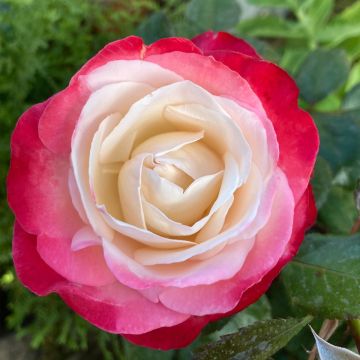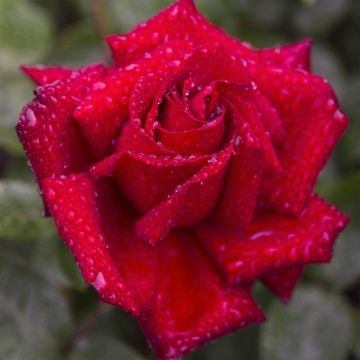

Rosa 'Blaze Superior'


Rosa 'Blaze Superior'
Rosa 'Blaze Superior'
Rosa Blaze Superior
Shrub received in poor condition, black spots, etc., only one small shoot has grown. I am taking care of it as best as I can. We will see in the spring how it turns out.
Brig, 18/11/2024
Special offer!
Receive a €20 voucher for any order over €90 (excluding delivery costs, credit notes, and plastic-free options)!
1- Add your favorite plants to your cart.
2- Once you have reached €90, confirm your order (you can even choose the delivery date!).
3- As soon as your order is shipped, you will receive an email containing your voucher code, valid for 3 months (90 days).
Your voucher is unique and can only be used once, for any order with a minimum value of €20, excluding delivery costs.
Can be combined with other current offers, non-divisible and non-refundable.
Home or relay delivery (depending on size and destination)
Schedule delivery date,
and select date in basket
We guarantee the quality of our plants for a full growing cycle, and will replace at our expense any plant that fails to recover under normal climatic and planting conditions.
Description
The 'Blaze' Superior climbing rose, more commonly marketed as Blaze Improved or Demokracie, is an old Czech variety still considered one of the best red climbers. This generous climbing rose is very popular across the Atlantic and difficult to find in the French horticultural trade. It bears large semi-double flowers of a scarlet red gathered in lightly scented clusters. Covered in flowers in late spring, it offers a beautiful re-flowering in late summer, well highlighted by its healthy dark green foliage. It is a lively plant, very easy to grow, ideal for enhancing any support provided.
The Demokracie climbing rose was discovered by Jan Böhm in 1935 in former Czechoslovakia and introduced to the United States in 1950 by the nursery Jackson & Perkins Co under the name "Blaze Improved". This horticultural hybrid belongs to the groups of the Wichurana liana roses, large-flowered climbers and floribundas, whose flowers are gathered in clusters. Its growth is rapid, developing long erect woody stems, green and adorned with sharp prickles, flexible enough to be trained. It can climb up to 4m (13ft) in height. Its long stems are covered with dark green, dentate leaflets, resistant to rose diseases under good growing conditions. In humid weather, they may stain. The 'Blaze Improved' roses, with wide 6cm (2in) blooms, have 20 to 25 petals. Sporadic blooms follow the abundant flowering in June in summer, and then the plant produces numerous roses again in September-October. They are born on short one-year-old shoots and on the current year's growth, gathered in clusters of several buds. Their color is a brilliant red with a hint of pink, and they seem to shine in the sunlight. Their fragrance is light.
'Blaze Improved' is a strikingly charming rose that radiates in the sun and catches everyone's attention in the garden. Like other climbers, it is incomparable to adorn a gate, the railing of a grand staircase, fences and small pergolas, or brighten up an old conifer hedge. Its red flowering pairs well with the 'Prince Charles' clematis, blue, or Miss Bateman, with white flowers. It is an ideal companion for dead trees that it will revive or sheds that give a wild charm to. Trained on an arch and placed on an unsightly fence, it dresses up the smallest decor without requiring much effort from the one who planted it.
Rosa 'Blaze Superior' in pictures


Plant habit
Flowering
Foliage
Botanical data
Rosa
Blaze Superior
Rosaceae
Cultivar or hybrid
Rosa canina Laxa (4L/5L pot)
Planting and care
The climbing rose Blaze Improved prefers sunny locations but avoids hot and confined exposures that can make it more susceptible to powdery mildew: avoid training it against a south or west-facing wall. While it doesn't appreciate excessive limestone, it tolerates it. It prefers fertile, fresh soils that allow it to reach its full potential. Water if the summer is dry to support flowering.
It will adapt to any garden if the soil is well-worked and rich. To plant your rose, work the soil by crumbling it well and place an amendment, such as blood, fish and bone, at the bottom of the planting hole. Water generously after planting to eliminate air pockets. Regularly water for a few weeks to facilitate rooting and during the first two dry and hot summers. Pruning this rose is only necessary to control its growth. If its spreading bothers you, don't hesitate to reduce the branches.
Planting period
Intended location
Care
Planting & care advice
-
, onOrder confirmed
Reply from on Promesse de fleurs
Similar products
Haven't found what you were looking for?
Hardiness is the lowest winter temperature a plant can endure without suffering serious damage or even dying. However, hardiness is affected by location (a sheltered area, such as a patio), protection (winter cover) and soil type (hardiness is improved by well-drained soil).

Photo Sharing Terms & Conditions
In order to encourage gardeners to interact and share their experiences, Promesse de fleurs offers various media enabling content to be uploaded onto its Site - in particular via the ‘Photo sharing’ module.
The User agrees to refrain from:
- Posting any content that is illegal, prejudicial, insulting, racist, inciteful to hatred, revisionist, contrary to public decency, that infringes on privacy or on the privacy rights of third parties, in particular the publicity rights of persons and goods, intellectual property rights, or the right to privacy.
- Submitting content on behalf of a third party;
- Impersonate the identity of a third party and/or publish any personal information about a third party;
In general, the User undertakes to refrain from any unethical behaviour.
All Content (in particular text, comments, files, images, photos, videos, creative works, etc.), which may be subject to property or intellectual property rights, image or other private rights, shall remain the property of the User, subject to the limited rights granted by the terms of the licence granted by Promesse de fleurs as stated below. Users are at liberty to publish or not to publish such Content on the Site, notably via the ‘Photo Sharing’ facility, and accept that this Content shall be made public and freely accessible, notably on the Internet.
Users further acknowledge, undertake to have ,and guarantee that they hold all necessary rights and permissions to publish such material on the Site, in particular with regard to the legislation in force pertaining to any privacy, property, intellectual property, image, or contractual rights, or rights of any other nature. By publishing such Content on the Site, Users acknowledge accepting full liability as publishers of the Content within the meaning of the law, and grant Promesse de fleurs, free of charge, an inclusive, worldwide licence for the said Content for the entire duration of its publication, including all reproduction, representation, up/downloading, displaying, performing, transmission, and storage rights.
Users also grant permission for their name to be linked to the Content and accept that this link may not always be made available.
By engaging in posting material, Users consent to their Content becoming automatically accessible on the Internet, in particular on other sites and/or blogs and/or web pages of the Promesse de fleurs site, including in particular social pages and the Promesse de fleurs catalogue.
Users may secure the removal of entrusted content free of charge by issuing a simple request via our contact form.
The flowering period indicated on our website applies to countries and regions located in USDA zone 8 (France, the United Kingdom, Ireland, the Netherlands, etc.)
It will vary according to where you live:
- In zones 9 to 10 (Italy, Spain, Greece, etc.), flowering will occur about 2 to 4 weeks earlier.
- In zones 6 to 7 (Germany, Poland, Slovenia, and lower mountainous regions), flowering will be delayed by 2 to 3 weeks.
- In zone 5 (Central Europe, Scandinavia), blooming will be delayed by 3 to 5 weeks.
In temperate climates, pruning of spring-flowering shrubs (forsythia, spireas, etc.) should be done just after flowering.
Pruning of summer-flowering shrubs (Indian Lilac, Perovskia, etc.) can be done in winter or spring.
In cold regions as well as with frost-sensitive plants, avoid pruning too early when severe frosts may still occur.
The planting period indicated on our website applies to countries and regions located in USDA zone 8 (France, United Kingdom, Ireland, Netherlands).
It will vary according to where you live:
- In Mediterranean zones (Marseille, Madrid, Milan, etc.), autumn and winter are the best planting periods.
- In continental zones (Strasbourg, Munich, Vienna, etc.), delay planting by 2 to 3 weeks in spring and bring it forward by 2 to 4 weeks in autumn.
- In mountainous regions (the Alps, Pyrenees, Carpathians, etc.), it is best to plant in late spring (May-June) or late summer (August-September).
The harvesting period indicated on our website applies to countries and regions in USDA zone 8 (France, England, Ireland, the Netherlands).
In colder areas (Scandinavia, Poland, Austria...) fruit and vegetable harvests are likely to be delayed by 3-4 weeks.
In warmer areas (Italy, Spain, Greece, etc.), harvesting will probably take place earlier, depending on weather conditions.
The sowing periods indicated on our website apply to countries and regions within USDA Zone 8 (France, UK, Ireland, Netherlands).
In colder areas (Scandinavia, Poland, Austria...), delay any outdoor sowing by 3-4 weeks, or sow under glass.
In warmer climes (Italy, Spain, Greece, etc.), bring outdoor sowing forward by a few weeks.

















































